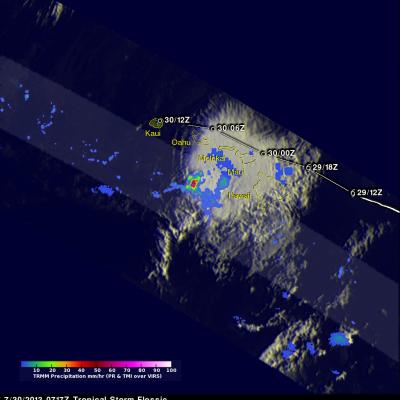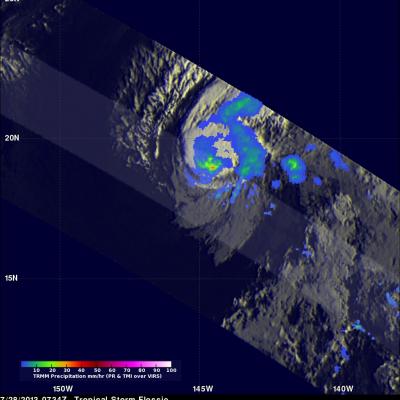Hawaii Says Aloha To Flossie
The TRMM satellite had an excellent day time view of dissipating tropical depression Flossie as it was moving to the northwest of the Hawaiian Islands on July 30, 2013 at 2348 UTC (1:38 PM HAST). An analysis of rainfall from TRMM's Microwave Imager (TMI) and Precipitation Radar (PR) is shown overlaid on a combination visible and infrared image from TRMM's Visible and InfraRed Scanner (VIRS) instrument. This analysis shows that very little precipitation was then occurring near the center of the weakening tropical cyclone's circulation. The most intense rain was found by TRMM to be falling at a




